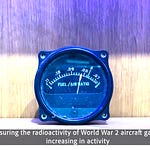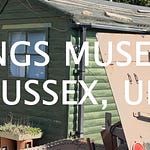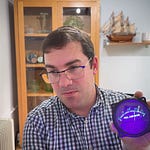Today I’ve sat down to compare three of my favourite uranium-glazed antiques: from the UK, the US, and a mysterious piece from mainland Europe.
I love these objects because each tells a story about how different cultures embraced colour, design, and yes… a little radioactivity.
1. America’s loud and proud Fiestaware
Let’s start across the Atlantic with the classic: Fiestaware. If you’ve ever looked up “Radioactive Red,” you’ve probably seen something very similar to the little breakfast bowl in my collection. The colour is stunning, somewhere between red, orange, and burnt ember, and it owes that glow to uranium oxide in the glaze.
This stuff is one of the most recognisable uranium-glazed items in the world. It’s also surprisingly spicy.
2. Europe’s colourful vase
Next up is a recent local find: an absolutely wild vase with an “exploded watermelon” pattern. It sits somewhere in the 1960s and is either Belgian or German, depending on who you ask (and trust me, I’ve asked).
Unlike the mass-produced Fiestaware, this one feels more like a studio piece; earthy, artistic, and unapologetically bold.
3. Britain’s polite chinaware
Finally, back home in the UK, we did things the British way: refined tea sets with a quiet little radioactive secret.
Crown Staffordshire produced some lovely pieces in the 1930s that used a pale uranium glaze, soft enough to look innocent, yet bright green under UV light. These weren’t rare at the time, and honestly, they still aren’t. Half the antique shops in the country have at least one example hiding on a shelf.
But they’re charming, quietly glowing reminders of a time when radiation wasn’t seen as something to avoid, but as a way to make your Sunday best a little more stylish.
If you haven’t seen the full comparison yet, check out the video—it’s a relaxed little tour through three glowing corners of history.
And if you’ve got your own uranium-glazed discoveries, I’d love to hear about them!







